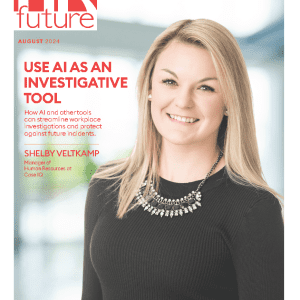With an estimated 25% of South Africans working remotely on any given day, hot-desking -where employees don’t have assigned desks but grab an empty one on days they come into the office – seems like a cost-saving no-brainer.
There’s just one problem, many employees hate it.
They complain about the nuisance of having to hunt for a workspace every day they’re in the office, not being able to find a station that suits their needs, and no longer having a permanent space that they can personalise.
Collaboration is harder, they say, and they feel less connected to their colleagues.
But despite employee resistance, it seems hotdesking is growing
In their 2022 study, the Gensler Research Institute, a global architecture, design, and planning firm, found that about 20% of the US office worker respondents had unassigned workspaces, compared with 10% in 2020.
In South Africa the numbers are similar – the use of hotdesks has about doubled in the last 3 years.
Employees experience more anxiety and rootlessness with hotdesking and are often emotionally and physically exhausted. Carrying work materials from place to place often makes employees feel adrift from the broader team.
Companies need to give hotdesking more thought.
On one level, the problems with hot-desking are logistical.
Employees often found it impossible to locate the right kind of workstation for their needs—a cubicle with two monitors for example, or a quiet standing desk, or a huddle room with a whiteboard.
Issues like these are more than just a personal annoyance. Hotdeskers also often have difficulty finding colleagues with whom they want to collaborate. And managers often find it more difficult to manage their team because they aren’t always close to one another.
We can see that more collaboration does not take place when you simply throw people together in a soup of random desks. Dissatisfied workers who don’t feel supported in the office are more likely to leave an organisation, and the costs of replacing talent can outweigh the cost-saving measures that hotdesking can provide.
But hotdesking doesn’t have to be a disaster for employees: some companies have adapted the basic model of hot-desking in ways that employees find attractive.
The introduction of ‘neighbourhoods’ where people still have to move around but they become linked to a home base area, as opposed to a desk, can work.
So-called ‘hoteling’ is another common solution that takes some of the day-to-day stress out of having to find a workspace: Employees book a specific space ahead of time, making it more likely that they can find the properly equipped workstation they need and eliminating the wasted time of searching for a spot upon arrival at the office.
Research also has found benefits from providing a mix of spaces with different ambiences, including some with privacy. Quiet areas with high partitions, noisier open cafes, spaces for small meetings and conference rooms, in addition to hotdesks is often a good solution.
Workers’ much prefer control over their interactions with each other.
Linda Trim is a Director at Giant Leap.


























